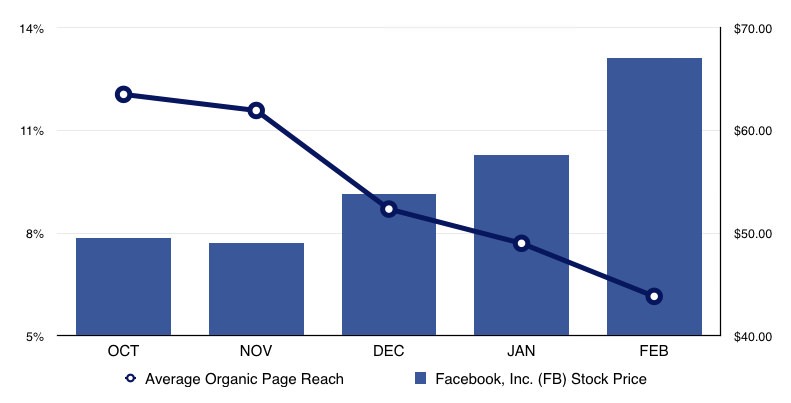If you’ve been reading these emails (and seriously, thank you if you have), you’ve noticed that I might ask you to share it on any given week. You may have also noticed we post these as blogs and encourage sharing via social media channels.
Last week, someone asked me if that was an okay practice for nonprofits and leaders. “It seems a little self-promotion-y,” he said. “They’re already reading it, isn’t it up to them whether they click the forward button?”
Putting aside for a moment the point we noted a few weeks ago about our obligation to share good things happening (Bragging, or the Art of Communicating Success), here’s something I didn’t know until a few of our social media experts share it with me: free digital “reach” died last year, and this necessitates changing how we think about communicating in social media.
“Reach” has a formal definition somewhere out there, but really it’s just the algorithm that determines who sees what. Here’s how it used to work on, say, Facebook:
- A friend of mine owns a restaurant. I’ve liked her restaurant’s page.I’m friends with you on Facebook, and you’re friends with your Aunt Sue.
- Aunt Sue has liked a couple of cooking recipes.
- My friend’s restaurant posts a cooking recipe, that post works its way through the tendrils of our friendships and likes to find Aunt Sue, who sees the cooking recipe even though she doesn’t necessarily even know my friend’s restaurant even exists.
- Aunt Sue makes the dish. She may or may not share (the dish or photos of it).
And this was how we shared stories that found hundreds, if not thousands of people who weren’t really in our social networks. It was a big boost, especially for nonprofits and small businesses with limited bandwidth or money for advertising.
In the last few years, the social companies realized that this was a powerful tool we were all relying on and using for free, so they changed the model. Now the only way to get the word out is to have people follow you, and click the share button. Otherwise, you have to pay for reach through advertising.
Which means, quite simply, you have to ask people to share your content. If you want them to share it online, you have to ask in the post, or send the link to your board and supporters in an email and ask them specifically to share.
So that’s why we ask you to share the good news news about what is possible for improving the health of our communities and lives of our kids in Louisiana. And if you have a great story to tell, as always please do share!
– Michael Tipton
BCBSLA Foundation President, Head of Community Relations
michael.tipton@bcbsla.com
(P.S., if our grantees, Angels and partners send the Blue Cross Foundation something on Facebook, we’re usually happy to share it.)
(P.P.S. Last year, some of our Blue Cross colleagues gave a webinar about social reach that has some really great tips. These are the experts I referenced above and you can watch it online here…)
